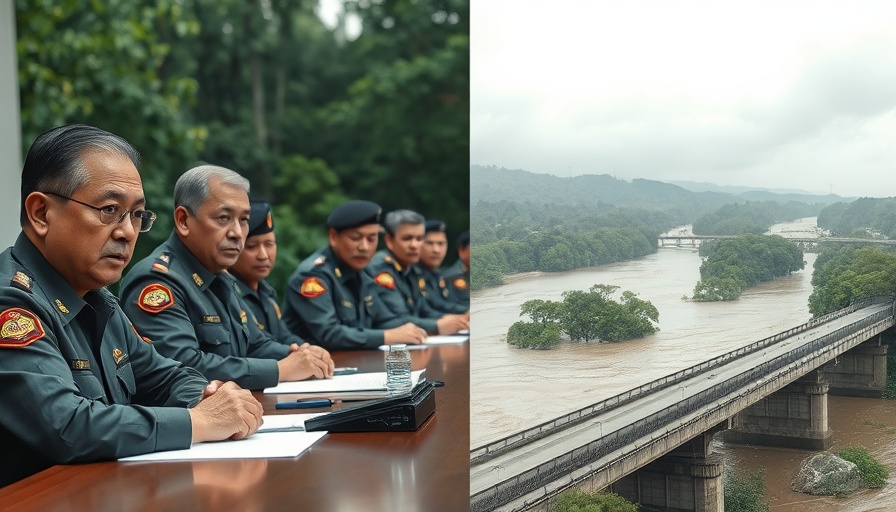
The Deadly Dance of Meteorological Chaos in Texas
On July 4th, 2025, Texas Hill Country experienced a catastrophic flooding event that has left the region reeling and more than 40 lives lost. This tragic occurrence was not solely due to a single climatic anomaly but rather the result of a complex interplay of atmospheric and geological factors that converged in a way few could have predicted.
The Initiation of Tropical Storm Barry
The situation began with Tropical Storm Barry making landfall along the eastern coast of Mexico, migrating northward into Texas. As the storm encountered a high-pressure system, it stalled, trapping moisture over central Texas—a phenomenon that meteorologists described as crucial in escalating the event to a flooding nightmare.
"It was a unique situation where everything was in exactly the wrong place," said Alan Gerard, a retired storm specialist with the National Oceanic and Atmospheric Administration. The atmospheric conditions set the stage for what meteorologists call "training thunderstorms," distinct storms that repeatedly impact the same area, in this case, Kerr County.
The Accumulation of Rainfall: A Torrential Downpour
In a matter of hours, that targeted saturation unleashed a staggering amount of rain—over 12 inches in some areas—totalling an estimated 120 billion gallons in Kerr County alone. The region's dry, rugged terrain, long parched by drought, was utterly unprepared for such an onslaught. Brett Anderson, a senior meteorologist at AccuWeather, explained, "Rainfall that intense edges toward running off rather than soaking in, much like water on concrete." Thus, the dry hills of Texas Hill Country, once only a picturesque backdrop, evolved into conduits for a raging torrent.
Understanding Flash Flood Dynamics
The nature of the soil in Hill Country pursues immediate drainage, which experts like hydrologist Hatim Sharif note as characteristic of semi-arid areas—"soils that don’t soak up much water, causing rainfall to sheet off quickly and shallow creeks to rise fast." This geological reality contributed to an extraordinary rise in streamflow in the Guadalupe River, described by the National Weather Service as a flood wave: "a rise in streamflow to a crest and its subsequent recession due to precipitation extremes." This flood wave shattered homes, uprooted lives, and showcased the deadly synergy of location and weather systems.
Lessons from Historical Context
Reflecting on past disasters, including tragedies in other parts of the U.S. similarly struck by torrential rain, it becomes clear that flash floods pose an omnipresent threat. Regions across the country, generally considered safe, can transform into disaster zones under particular meteorological conditions, often exacerbated by climate change.
Experts argue that as such extreme weather events rise in frequency, communities must invest in proactive infrastructure enhancements and emergency preparedness to shield against potential catastrophes. Emergency operations could be the life-saving difference in moments when nature unleashes its fury.
Future Predictions: A Changing Climate
As climate change continues to modify precipitation patterns, scientists predict that areas like Texas Hill Country may experience more frequent and severe flooding events, making it crucial for local governments and citizens to implement sustainable water management strategies and establish swift response protocols.
"As is often the case with the worst disasters, many things came together in a terrible way," stated Robert Henson, a meteorologist. Awareness and education surrounding climate impacts need to be prioritized if communities hope to adapt and mitigate risks linked to future flooding scenarios.
Concluding Thoughts on the Texas Flooding Crisis
The impact of the Texas flooding tragedy serves as a stark reminder of nature’s unpredictable power—an intricate web of environmental factors and human vulnerabilities come together at an unforeseen moment, leading to devastating consequences. In the aftermath, the focus should be on learning from this event and preparing for future occurrences.
As we reflect on this dark chapter in Texas history, it stands as a call to action: Speak about climate-related news, engage in community discussions on disaster readiness, and advocate for responsible environmental policies to safeguard lives in the future.
 Add Element
Add Element  Add Row
Add Row 



Write A Comment